Internet Protocols
Protocols are rules that describe how clients and servers communicate with each other over a network. There are many different protocols with different purposes. These protocols are implemented by operating systems, browsers, and networking devices.
The protocol itself is not computer code but instructions to follow when writing the code in order for the device or application to work with other devices and applications.
If you are curious and would like to see the original documents describing some of these protocols, you can find them in the RFC (request for comments) section of the IETF website.
ietf.org/standards/rfcs
Internet Protocols
Common Network Protocols
- FTP : File Transfer Protocol
- SMTP : Simple Mail Transfer Protocol
- POP : Post Office Protocol
- IMAP : Internet Message Access Protocol
- HTTP : Hypertext Transfer Protocol
- TCP : Transmission Control Protocol
- IP : Internet Protocol
Internet Protocols
File Transfer Protocol
FTP is a set of rules that for exchanging files over the internet. Unlike HTTP which is used to ask for the entire webpage and it's files to display them, FTP is used only to move a file from one computer to another. FTP is commonly used by web developers when they want to tranfer their local files from their computer to the server and vice versa.
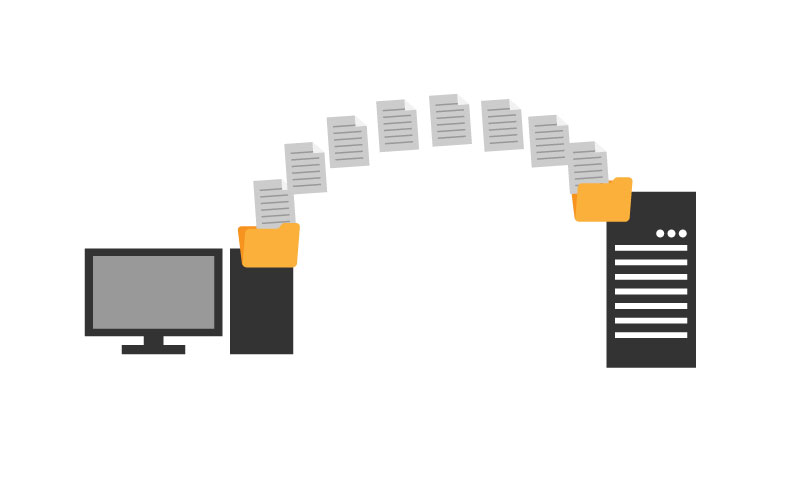
Internet Protocols
E-mail Protocols
E-mails use a different protocol than web pages. For out-going emails, Simple Mail Transfer Protocol(SMTP) is used. For in-coming email, Post Office Protocol(POP) and Internet Message Access Protocol(IMAP) can be used.

Internet Protocols
Hyper Text Transfer Protocol
Web browsers and web servers communicate using HTTP. HTTP has rules for exchanging different types of files like text, images, audio, and video. When a browser is directed to a hyperlink, an HTTP request is built and sent to the server of that URL which then processes the request and responds by sending the requested files.
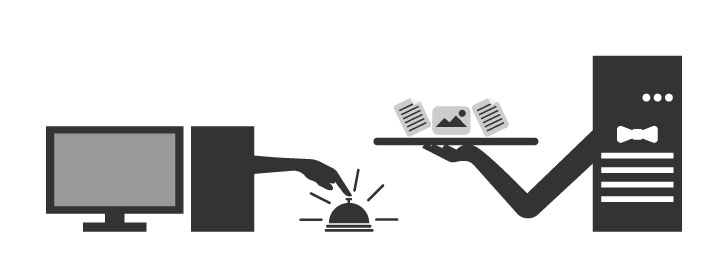
Internet Protocols
Transmission Control Protocol/Internet Protocol(TCP/IP)
TCP/IP is the official internet protocol suite. TCP, IP and the many other protocols of TCP/IP have specific functions and work together to ensure reliable network communication.
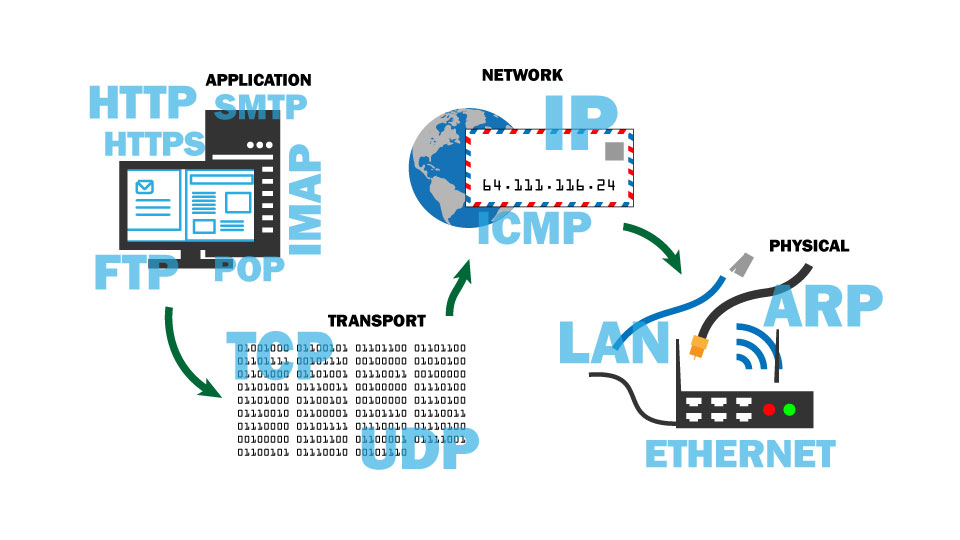
Internet Protocols
Transmission Control Protocol
TCP defines how to connect and communicate reliably over a network. It sets up a connection to the destination machine, breaks data into pieces, and adds information to each piece of data to ensure that it will arrive to the correct destination application in the correct order.
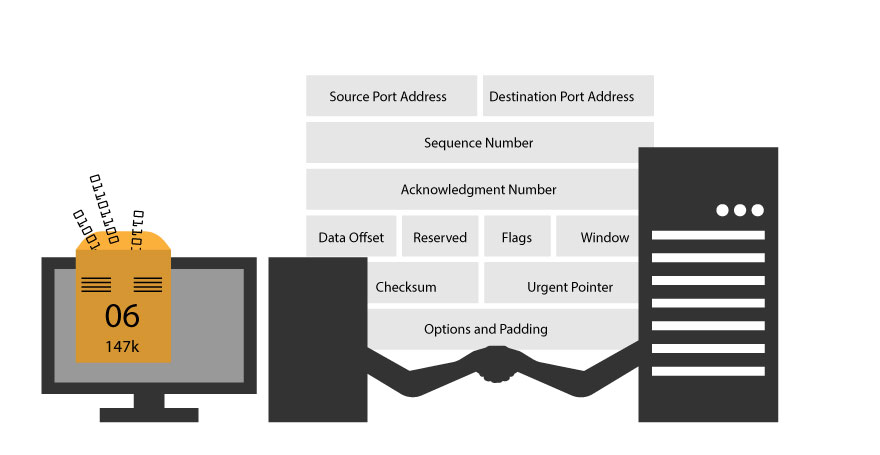
Internet Protocols
Internet Protocol
IP works with TCP and adds additional information to each piece of data such as the IP version and address so that the data can be routed to the correct network. When the IP information is added, the data is often referred to as a packet. Packets go from one router to another until they arrive at the destination network.
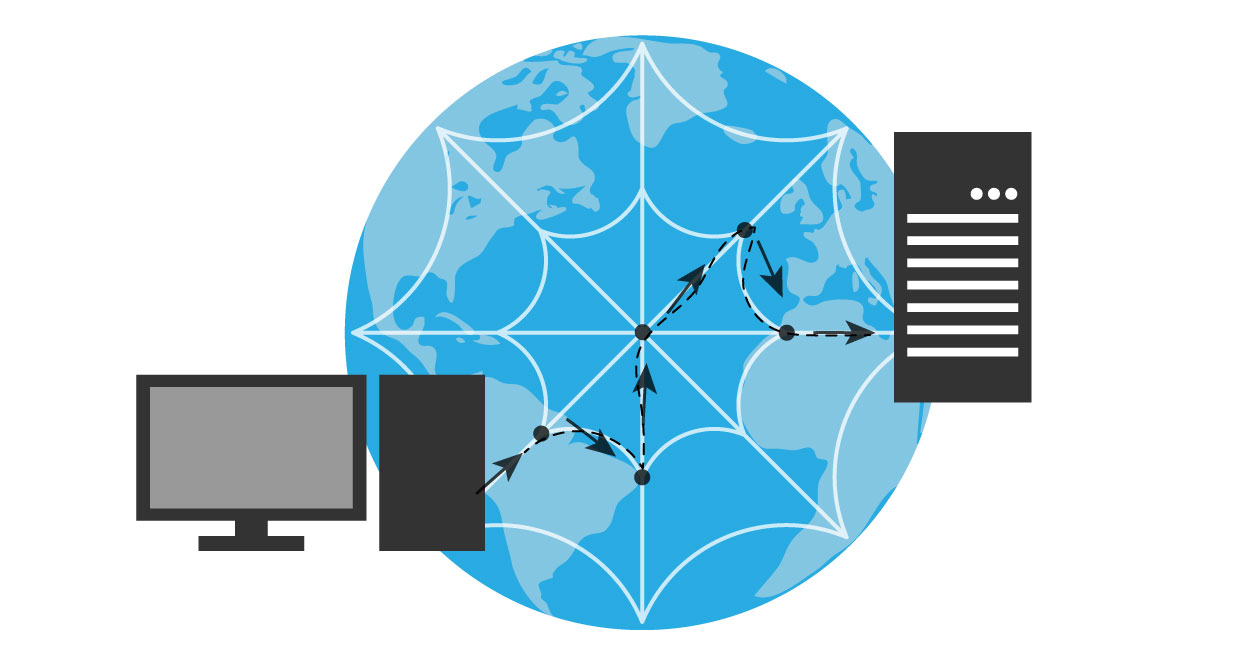
Internet Protocols
IP Address
An IP address is a numeric ID given to each device connected to the internet. Every network has a public IP address and every device in the network has a private IP address. IP addresses sometimes correspond to domain names. The Domain Name System associates IP addresses with URLs with domain names.
IPv4
- Made of 4 8-bit numbers separated by periods.
- Total 32 bits
- Each number can range between 0 and 255.
- XXX . XXX . XXX . XXX
- Total of 4,294,967,296 possible unique combinations.
- First standard or public version of IP.
- In Use since early 1980s.
IPv6
- Made of 32 hexadecimal numbers grouped in 4s, separated by colons.
- Each number can range between 0-9 and A-F.
- Total 128 bits
- XXXX : XXXX : XXXX : XXXX : XXXX : XXXX : XXXX : XXXX
- 340,282,366,920,938,463,463,374,607,431,768,211,456 unique combinations
- Development began in 1998 and became official standard in 2017





